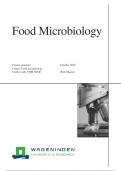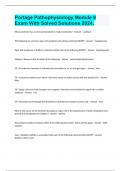Samenvatting
Food Microbiology - Complete summary
- Instelling
- Wageningen University (WUR)
Complete and detailed summary for Food Microbiology with important equations, pictures and detailed information about pathogenic bacteria, fermentation processes and hygiene management.
[Meer zien]





